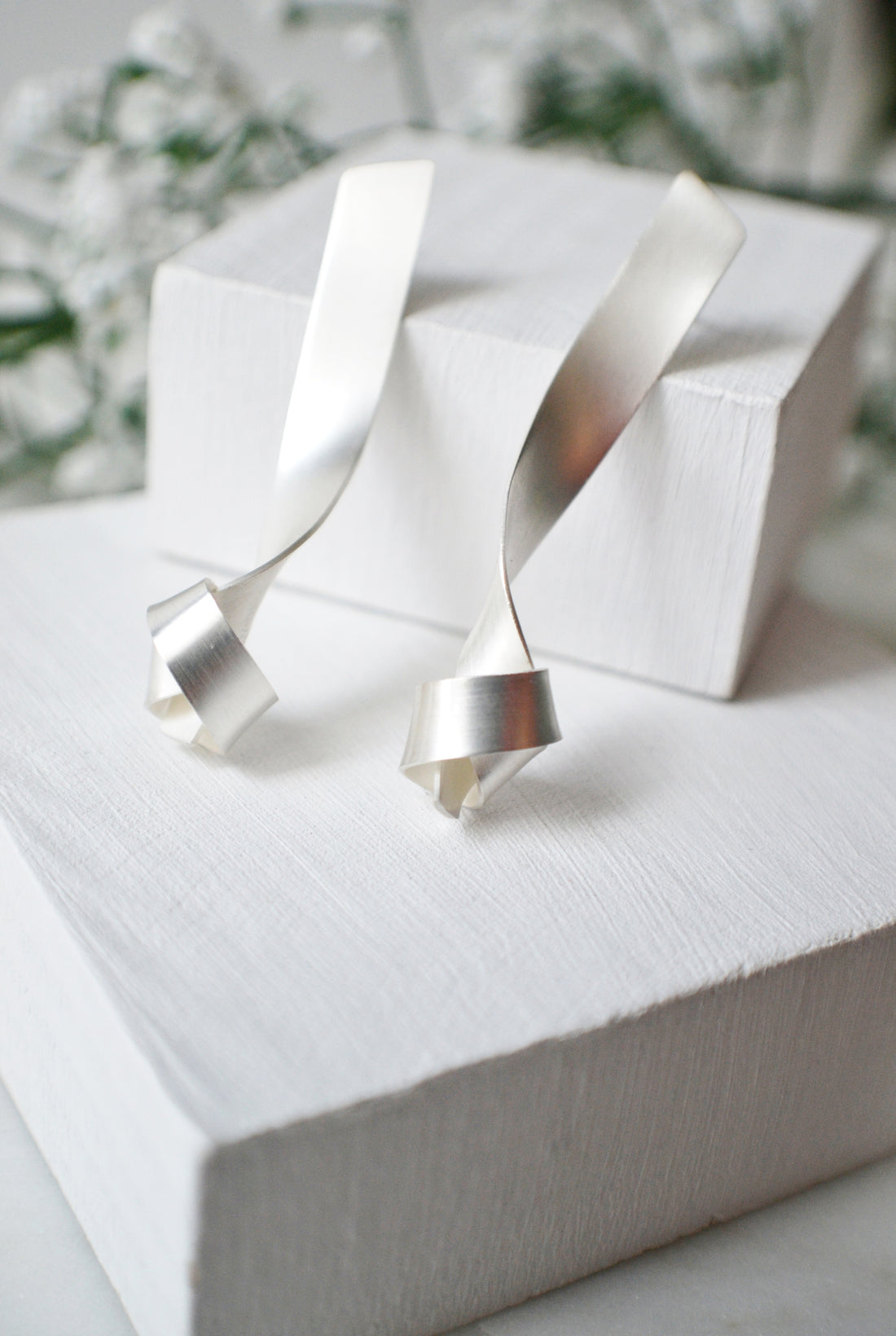Sterling silver—it is considered the whitest metal on Earth. A brand new, hand polished piece of jewellery can be so bright and reflective that it can be used as a mirror. But if you leave that jewellery out, exposed to the air, over time it can tarnish and become yellow, grey, and even black.
Today I'd like to share my favourite, environmentally friendly ways to clean tarnish off of jewellery, and to prevent tarnish from happening in the first place.
1. Store it in a ziploc bag
Preventing tarnish is easy and will save you time. It is actually the sulphur in our atmosphere reacting with the copper in sterling silver that causes tarnish. It is a chemical reaction that happens naturally. Sterling silver, by legal definition, is 92.5% pure silver and 7.5% alloy—historically copper, but there are newer, and more tarnish-resistant alloys available. At Jewelust, we use a 100% recycled, and tarnish-resistant version of sterling silver. (Note that there is no such thing as tarnish-proof, all silver will tarnish unless it has been rhodium plated.) So to prevent the tarnish from happening in the first place, I store my jewellery in an air-tight container or re-sealable (ziploc) bag. We save all the . Tip: If you are storing a fine chain, leave a small part hanging outside of the bag to prevent the chain from knotting, then put that bag into a larger bag or the end of the chain that sticks out of the bag will tarnish.
2. Keep away from chemicals, cleaners, and perfumes/lotions
When dressing, put your jewellery on last—after you apply lotions, perfumes, hairspray, or really anything that could get on the jewellery during application—and take it off when swimming, showering, cleaning, or doing anything with chemicals. While most silver tarnish occurs from the sulphur in the air, chemical reactions can happen from everyday cleaners and products that we use.
3. Give it a baking soda bath
When I was a kid, my grandma used to mix up a magic potion to clean the silverware. She'd put the blackened forks and spoons in a bubbling pan on the stove, then wipe them down, and they were silver again! Turns out this magic was just baking soda, water, and aluminum foil. Here's what to do:
If your piece is silver only (no gemstones or pearls) you may use hot or boiling water. If your piece has enamel, gemstones or pearls, DO NOT use boiling water. Many gems are too fragile to withstand it.
I. Place the aluminum foil on the bottom of a bowl (I save my foil so that I can reuse it many times). Then place your jewellery on top of the foil,. Add a tablespoon of baking soda, then add enough water to cover your jewellery. If you have a lot of jewellery or large pieces, you may use more baking soda. The baking soda will bubble and remove the tarnish as you watch! It should only take a moment, but heavily tarnished jewellery may take longer.
II. Remove jewellery from the water (with tongs if you used boiling water), and gently brush each piece with a clean, soft toothbrush or cloth.
III. Repeat until your jewellery is clean, and then allow it to dry.
This works really well for chains, because it cleans inside of the tiny links, which you can't reach if you're using a jewellery polishing cloth. It is also the recommended method for cleaning your Ribbon (Whirl) jewellery so that you do not ruin the matte finish or depletion gilding. Polishing cloths are meant to polish, so they can ruin a matte finish.
If you'd like some more information about jewellery care, take a look at our Jewellery Care Tips.
If you have any other natural cleaning tips, I'd love to hear them! Or if you're trying this for the first time, let me know how it goes. Leave a comment below!
Here's a quick instagram video of the process:

